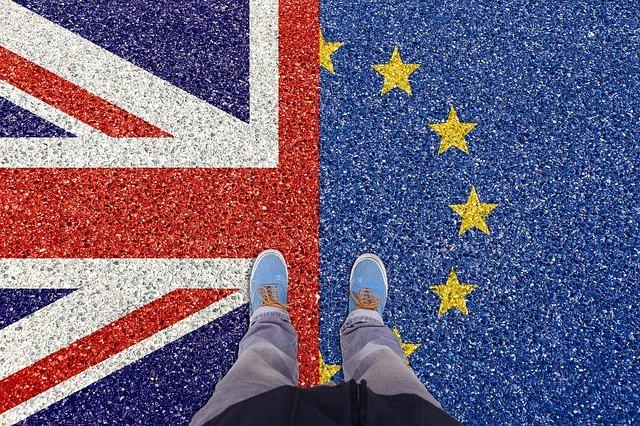The Impact of Brexit on Food Labelling Regulations
12th May, 2019
Brexit is a time of uncertainty for many within the food industry as we try and understand what will happen when the UK leaves the European Union.
In truth nobody can say for certain what will happen following Brexit, however it is likely to be a tumultuous time for food businesses as labelling regulations could change promptly depending on deal factors, with fears that companies are not prepared for a no deal Brexit.
This is a view echoed by Malta’s Prime Minister Joseph Muscat, telling the European Carton Makers Association in September 2019 that he gets “the impression that we were more prepared for the Millennium Bug than Brexit… I’m worried about the fact that most companies have not prepared themselves or re-evaluated their position if a ‘No Deal’ takes place”.
This means whilst it makes sense to try and plan for the future, the only sure-fire way of preparing for Brexit is investing in smart labelling and printing software that has the flexibility to accommodate rapidly changing label guidelines.
This is already prudent as the UK has no control over how food labelling regulations will be enforced by European countries with the potential for these changes to be made before October 31.
With £13.3 billion food and drink exported to the EU in 2017, it is crucial that businesses that export food are still able to meet EU food regulations if they want to maintain profitability.
Food labelling regulations after Brexit
There are two distinct possibilities that have different ramifications for food suppliers in the UK. A deal will either be reached, or the UK will leave the European Union without a deal on October 31.
Even if a transition deal is reached it will still likely require significant changes in labelling as UK produce will no longer be able to display an EU emblem, the EU organic food label or display EU as country of origin.
The UK will likely create equivalent signage and standards to be used, which will again require a labelling system that can download new templates and logos.
If the UK and the EU fail to reach an agreement and the UK leaves the EU with no deal this could mean significant change and disruption to the food manufacturing industry.
Regulations for food packaging labelling after no deal Brexit
In theory this will mean that the transition period is scrapped and all the new regulations for labelling and product labelling could come into effect immediately.
However the government has tried to allay fears by issuing advice on food labelling and compositional standards if no deal is reached.
Whilst the majority of EU provisions would be rolled over “some changes would be required to reflect the fact that the UK will no longer be a member of the EU.”
This leaves a wide scope for significant changes within the industry which food manufacturers will need to be able to adopt to.
It is expected that the likes of honey, olive oil and wine will likely have different standards and therefore require different labels to the current European-wide legislation.
Currently this is just speculation and the only real way to mitigate any insecurity from Brexit is to invest in a smart labelling system that can offer the flexibility to deal with a fast-changing legislative landscape.
Adapting to new food label laws
Previously food manufacturers have had greater certainty with food labelling rules and regulations which has allowed them to settle for label printing software which is less flexible and unable to adapt quickly.
This has all changed. Businesses that cannot easily change their food packaging labelling requirements quickly will find it difficult to export food into domestic and continental markets. This could lead to a backlog of food products going out of date, impacting businesses bottom line.
Flexible label design software for adaptable production lines
CLARiSOFT label design software, used across all of the ICE range of coders and labellers, offers the flexibility and intelligence to rapidly change the legally required variable information on food packaging. This can help to ensure your business can satisfy the food label regulations for any market in terms of variable information– no matter what happens after Brexit.
The CLARiSOFT label design software makes it easy to input the information for each field type in the label design natively or externally, empowering all workers to create label templates that comply with food labelling regulations post Brexit. The intelligent and flexible date/time formats with auto best before date calculation and concession management is a unique functionality of the software.
Furthermore, the ability to easily bold, underline or italicise ingredients ensures users comply with the EU food labelling regulations 2014 and the newly expected regulations in the UK.
The CLARiTY user-friendly touch screen and drag and drop functionality means users can easily edit labels as needed. Alternatively, this can be locked to avoid user input and potential human error.
The CLARiNET networking software allows all printers to have access to the various label templates enabling different production lines to print customised labels to ensure compliance in different markets post Brexit.
Ultimately the CLARiSUITE range from Clearmark ensures food manufacturers have the flexibility to respond to rapidly changing labelling regulations without slowing down production lines. This ensures your business can maintain full operational speed in the face of Brexit uncertainty.
Speak to one of our experts today for free advice on how CLARiSUITE software, used across all ICE coders can help mitigate the risk of Brexit by emailing enquiries@uk.interactivecoding.com or calling 01159 640144.
Related
Brexit labelling changes for British produced foods sold into the EU

More Resources

